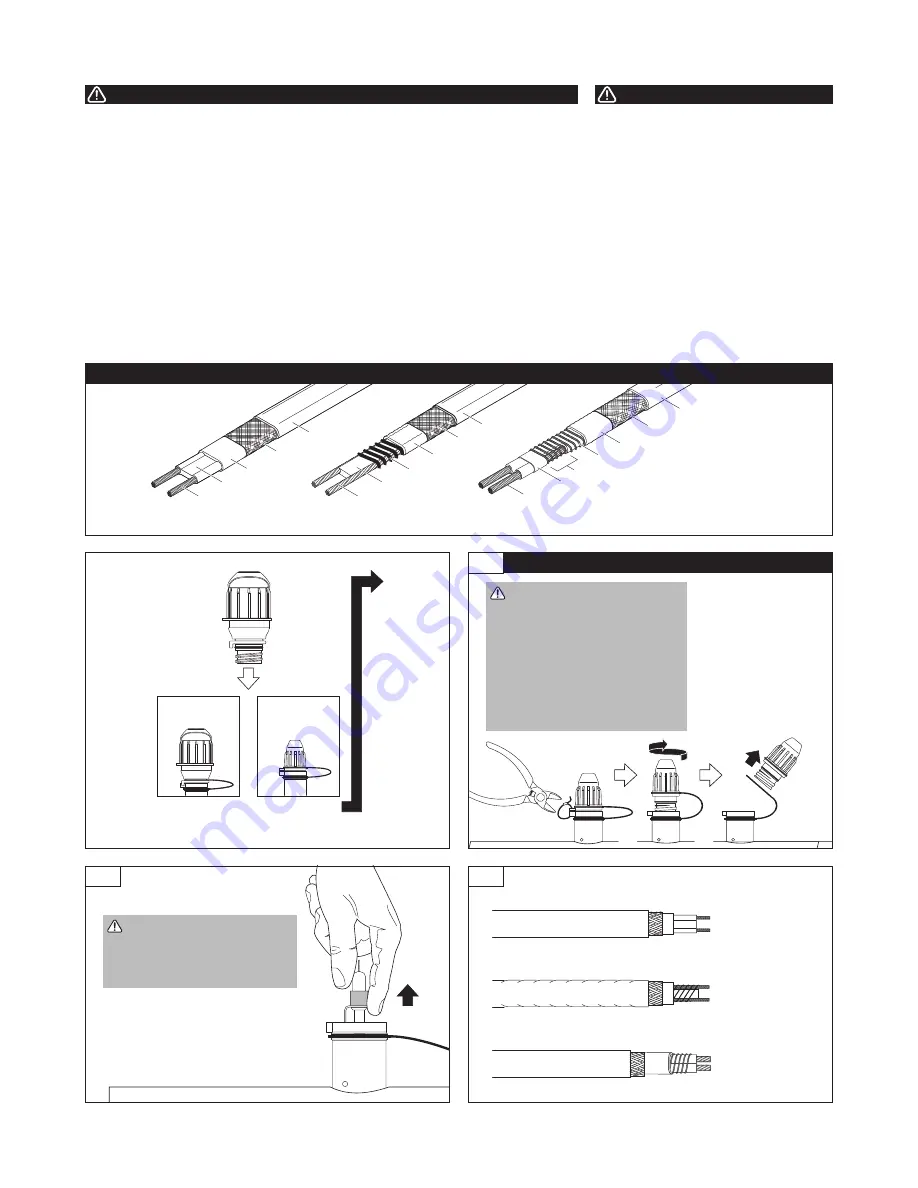
2 | nVent.com
XTV, KTV
BTV, QTVR
Go to Step 4A
Go to Step 4A
Go to Step 4B
VPL
2
3
• Remove and discard boot.
• Using a dry towel, clean
sealant from end of heating
cable.
Clear jacket
Inner jacket
Braid
Outer
jacket
Heating element
Insulated bus wire
Bus wire connection
VPL-CT
Inner jacket
Outer jacket
Spacer
Conductive fiber
Bus wire
Braid
XTV-CT, KTV-CT
Bus wire
Conductive core
Inner jacket
Braid
Outer
jacket
BTV-CR, BTV-CT, QTVR-CT
HEATING CABLE TYPES
Light
Replacement
Light
Retrofit
Go to Step A
(page 6)
Go to Step 1
1
• Turn off power.
• Clip cable tie and
remove.
• Unscrew cap from
end seal stand.
• Remove cap from
yellow leash.
BEGIN HERE FOR LIGHT RETROFIT.
WARNING: Shock Hazard.
Electrical conductors will be
exposed. Re-entry should
only be performed by
qualified personnel. Turn off
power and follow standard
electrical lockout
procedures before opening
end seal.
CAUTION: Health Hazard.
Wash hands if you contact
sealant. Consult MSDS
VEN 0058.
This component is an electrical device that
must be installed correctly to ensure proper
operation and to prevent shock or fire. Read
these important warnings and carefully follow
all of the installation instructions.
• To minimize the danger of fire from
sustained electrical arcing if the heating
cable is damaged or improperly installed,
and to comply with the requirements of
nVent, agency certifications, and the National
Electrical Code, ground-fault equipment
protection must be used. Arcing may not be
stopped by conventional circuit breakers.
• Component approvals and performance are
based on the use of nVent-specified parts
only. Do not use substitute parts or vinyl
electrical tape.
• The black heating cable core and fibers are
conductive and can short. They must be
properly insulated and kept dry.
• Damaged bus wires can overheat or short.
Do not break bus wire strands when scoring
the jacket or core.
• Keep components and heating cable ends
dry before and during installation.
• Bus wires will short if they contact each
other. Keep bus wires separated.
• Use only fire-resistant insulation materials,
such as fiberglass wrap or flame-retardant
foam.
• Leave these installation instructions with
the user for future use.
Health Hazard:
Prolonged or repeated contact
with the sealant in the core sealer may
cause skin irritation. Wash hands thoroughly.
Overheating or burning the sealant will
produce fumes that may cause polymer fume
fever. Avoid contamination of cigarettes or
tobacco. Consult MSDS VEN 0058 for further
information.
CHEMTREC 24-hour emergency telephone:
(800) 424-9300.
Non-emergency health and safety information:
(800) 545-6258.
WARNING:
CAUTION:


























